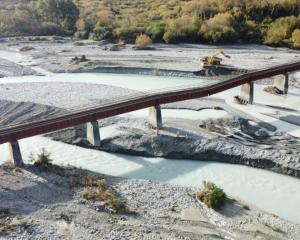A sub-tropical weather system which has recently caused flooding in New South Wales is forecast to bring a wet week to northern and central New Zealand.
A rainmaker weather system is forecast to move in from the Tasman Sea on Tuesday bringing a trough of low pressure to northern and central parts of the country.
The trough is expected to move north on Wednesday with the Far North bearing the brunt of the rain before the system retreats south on Thursday bringing with it potential for heavy rainfall.
Southern parts of the country are expected to miss the worst of the system, with sunshine and showers forecast before strong westerlies turn to cold southerlies later in the week.
MetService Meteorologist Peter Little said heavy rain brought by the system could lead to flooding in some areas.
"Periods of rain and gales are likely over northern and central New Zealand this week as a rainmaker moves eastwards across the Tasman Sea.
"Heavy rain is possible in northern and western regions, which has the potential to cause flooding. People should stay up to date with their forecasts and potential severe weather warnings."
He said the arrival of the nasty weather is expected to be signalled by the presence of high cloud, and the weather system is forecast to stick around until Saturday.
Little said the sub-tropical system was expected to cause significant variability in temperatures across the country.
"There will be a large spread in temperatures from north to south by the end of the week. On Friday maximum temperatures in the low twenties are forecast for northern parts of the country being affected by the sub-tropical weather system, while single digit highs will be common over the southern half of the South Island," Little said.
Meanwhile, skifields in Canterbury will welcome another snow dump as the sub-tropical system collides with a cold front, leading to significant snowfall in inland parts of Canterbury and the Kaikōura Ranges on Friday.
The forecast snowfall could have an impact on families travelling around the South Island for the start of the July school holidays, Little said.












